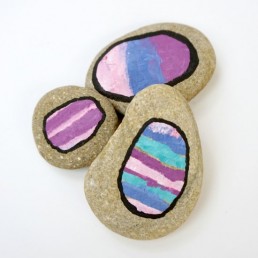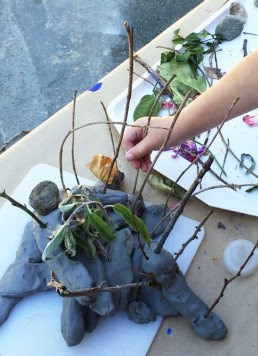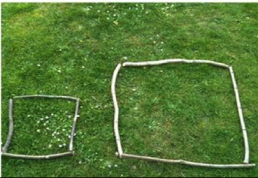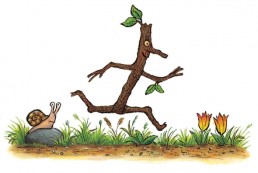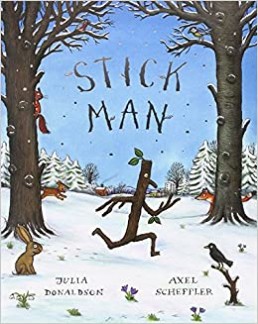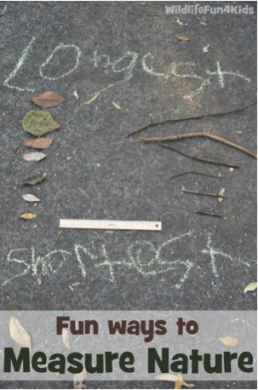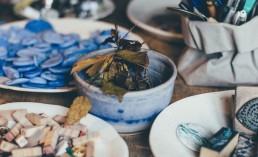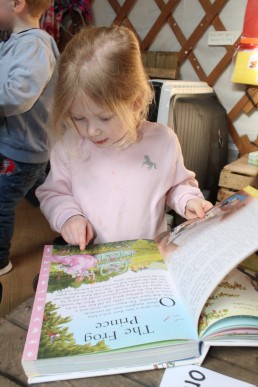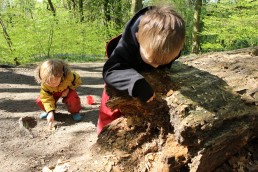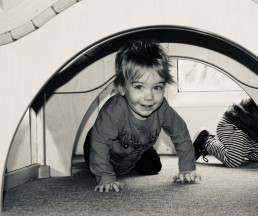Activity 6- Easter Stone Hunt
Resources: Stones, paint, pens
Implementation
As we don’t want to waste our eggs or have to buy a lot of chocolate at this time, why not find some large stones on a scavenger hunt and decorate them. If you don’t have pens or paint you could make berry, beetroot, paprika, turmeric and many other natural paint colours to use. If your pens or paints are limited you could just number the stones and challenge your children to find, identify and order the stones to their individual ability.
Intent- Learning Goals
Understanding the World – People and Communities
22-36 months
- Learns that they have similarities and differences that connect
them to, and distinguish them from, others.
30-50 months
- Knows some of the things that make them unique, and can
talk about some of the similarities and differences in relation to
friends or family.
40-60 months
- Enjoys joining in with family customs and routines.
Maths – Numbers
40-60 months
- Recognises numerals 1 to 5+
Physical Development – Moving and Handling
22-36 months
- Shows control in holding and using jugs to pour, hammers,
books and mark-making tools.
- May be beginning to show preference for dominant hand.
30-50 months
- Holds pencil between thumb and two fingers, no longer using whole-hand grasp.
- Holds pencil near point between first two fingers and thumb and uses it with good control.
40-60 months
- Shows a preference for a dominant hand.
- Begins to use anticlockwise movement and retrace vertical lines.
- Uses a pencil and holds it effectively
Impact
Please use this space to record any findings, adaptions, reflections and quotes from your children. We would love you to email them back to us or share them on Tapestry.
Activity 5- Stick Models
Resources: Sticks and home made play dough or messy but fun naturally sourced mud or clay.
Easy make at home play dough recipe: https://www.youtube.com/watch?v=jv73CEzY1jg
Implementation
To extend on your 2D stick shapes, have a go making 3D shapes or models using your sticks and playdough/mud to hold them together.
You may have your own ideas of what works best for you
that you can also share with us.
What would you like your model to look like?
What you will use?
How will you? What else might work? What could you do differently?
What could you add? What does it remind you of?
Can you tell me about your model?
Intent
Characteristics of Effective Learning – Creating and Thinking Critically
Having their own ideas
- Thinking of ideas
- Finding ways to solve problems
- Finding new ways to do things
 Making links
Making links
- Making links and noticing patterns in their experience
- Making predictions
- Testing their ideas
- Developing ideas of grouping, sequences, cause and effect
Choosing ways to do things
- Planning, making decisions about how to approach a task,solve a problem and reach a goal
- Checking how well their activities are going
- Changing strategy as needed
- Reviewing how well the approach worked
Maths – Shape Space and Measure
22-36 months
- Notices simple shapes and patterns in pictures.
30-50 months
- Shows an interest in shape and space by playing with shapes or making arrangements with objects.
- Uses positional language.
- Shows interest in shape by sustained construction activity or by talking about shapes or arrangements.
- Uses shapes appropriately for tasks.
40-60 months
- Beginning to use mathematical names for ‘solid’ 3D shapes and ‘flat’ 2D shapes, and mathematical terms to describe shapes.
- Uses familiar objects and common shapes to create and recreate patterns and build models.
Expressive Arts and Design – Exploring using Media and Materials
30-50 months
- Uses various construction materials.
- Beginning to construct, stacking blocks vertically and horizontally, making enclosures and creating spaces.
- Joins construction pieces together to build and balance.
40-60 months
- Understands that different media can be combined to create new effects.
- Manipulates materials to achieve a planned effect.
- Constructs with a purpose in mind, using a variety of resources.
- Selects appropriate resources and adapts work where necessary.
- Selects tools and techniques needed to shape, assemble and join materials they are using.
Impact
Please use this space to record any findings, adaptions, reflections and quotes from your children. We would love you to email them back to us or share them on Tapestry.
Activity 4- Stick Shapes
Implementation
Resources: Sticks and any other loose parts
Use Sticks to make 2D shapes and Transient Art Pictures
Can you make a shape/picture with your sticks?
I wonder what shape you will make?
How will you make it?
I wonder how many sides it has?
What does it remind you of?
Is there anything you would like to add to your shape/picture?
Intent- Learning Goals
Maths – shape, space and measure
22-36 months
- Notices simple shapes and patterns in pictures.
- Beginning to categorise objects according to properties such as shape or size.
30-50 months
- Shows an interest in shape and space by playing with shapes or making arrangements with objects.
- Uses positional language.
- Shows interest in shape by sustained construction activity or by talking about shapes or arrangements.
- Shows interest in shapes in the environment
.• Uses shapes appropriately for tasks.
- Beginning to talk about the shapes of everyday objects, e.g. ‘round’ and ‘tall’.
40-60 months
- Beginning to use mathematical names for ‘flat’ 2D shapes, and mathematical terms to describe shapes.
- Selects a particular named shape.
- Can describe their relative position such as ‘behind’ or ‘next to’ • Uses familiar objects and common shapes to create and recreate patterns and build models.
Expressive Arts and Design – Being Imaginative
30-50 months
- Uses available resources to create props to support role-play.• Captures experiences and responses with a range of media, such as music, dance and paint and other materials or words.
40-60 months
- Create simple representations of events, people and objects.
Impact
Please use this space to record any findings, adaptations, reflections and quotes from your children.
Transient art is temporary so this could be an opportunity for your children to use cameras or iPads to take photos before their pictures/shapes are moved.
Technology
22-36 months
- Seeks to acquire basic skills in turning on and operating some ICT equipment
30-50 months
- Knows how to operate simple equipment, e.g. turns on CD player and uses remote control.
- Shows an interest in technological toys with knobs or pulleys, or real objects such as cameras or mobile phones.
40-60 months
- Uses ICT hardware to interact with age-appropriate computer Software
We would love you to email them back to us or share them on Tapestry.
Home School Activity 3- Make Your Own Stick Man
Implementation
Resources: Sticks
Use the different sized sticks you’ve collected to make a Stick Man.
How will you join them together?
What could you use for his eyes?
Take a photograph of your Stick Man and share it with us!
Intent- Learning Objectives
Moving and Handling
22-36 months
- Shows control in holding and using jugs to pour, hammers, books and mark-making tools.
- Beginning to use three fingers
30-50 months
- Uses one-handed tools and equipment
40-60 months
- Uses simple tools to effect changes to materials.• Handles tools, objects, construction and malleable materials safely and with increasing control.
Literacy
22-36 months
- Has some favourite stories, rhymes, songs, poems or jingles
30-50 months
- Describes main story settings, events and principal characters.• Shows interest in illustrations and print in books and print in the environment.
40-60 months
- Uses vocabulary and forms of speech that are increasingly influenced by their experiences of books.• Enjoys an increasing range of books.
Being Imaginative
22-36 months
- Beginning to use representation to communicate, e.g. drawing a line and saying ‘That’s me.’
30-50 months
- Captures experiences and responses with a range of media, such as music, dance and paint and other materials or words.
40-60 months
- Creates simple representations of events, people and objects.
Exploring and using media and materials
30-50 months
- Joins construction pieces together to build and balance.• Realises tools can be used for a purpose.
40-60 months
- Understands that different media can be combined to create new effects. • Manipulates materials to achieve a planned effect.• Constructs with a purpose in mind, using a variety of resources.• Uses simple tools and techniques competently and appropriately.• Selects appropriate resources and adapts work where necessary.• Selects tools and techniques needed to shape, assemble andjoin materials they are using.
Technology
30-50 months
- Knows how to operate simple equipment, e.g. turns on CD player and uses remote control
Impact-
How did this activity go? Please use this space to record any findings, adaptions, reflections and quotes from your children. We would love you to email them back to us or share them on Tapestry, Instagram or Facebook.
Story Time- Open ended Question ideas
This applies to all books you may be reading with your children, not just stickman.
Looking at the Cover
Can you find the Front Cover?
What can you see on the front cover?
What might this book be about?
Can you find/point to the title?
What might happen in the story?
Parent can read the title and ask again what might happen.
Talk about the Author/Illustrator and any related books
Inside the Book
What is happening on this page?
Can you turn the next page?
How do you think the character feels? Why?
How would you feel?
What might happen next?
Do you know what that word means?
What might happen at the end of the story?
When Finished
Can you remember the characters in the story?
What happened in the story?
What happened to this character in the story?
What did you find out?
Did you like this book…why?
What was your favourite part?
Who was your favourite character?
Can you re-tell the story in your own words?
Do you like how the story ended?
Can you think of another way the story could have ended?
We suggest your child listens to the story with you many times over a week and is able to look at the book/video independently when chooses to. Your child will become familiar with the story, characters, depth of the story messages, rhyme and phrases, illustrations and even letter/word recognition. Hopefully they will be able to retell the story, talk in more detail about the characters and their feelings/actions, use their imagination to change parts of the story or rhyme, draw simple representations of the characters or main events, role play the story, copy words/label pictures from the story or share retelling with younger siblings.
https://www.youtube.com/watch?v=6FlKIjVeNY0&t=18s
Home School Activity 2: Sticks
Resources: Sticks
Implementation
We see a lot of you found sticks during your scavenger hunt, so using these sticks, encourage your children to look at the sizes of them and ask what they can see.
 Support them if necessary to place the sticks into size order using mathematical language of size and length, long, short, biggest, smallest, medium etc.
Support them if necessary to place the sticks into size order using mathematical language of size and length, long, short, biggest, smallest, medium etc.
Extension – using a stone, hands, Lego or what your child believes would be appropriate, (trial and error and problem solving) you could measure the sticks and record your findings with any representation suitable with your child’s ability, such as drawing pictures, taking photographs, writing digits.
Intent- Learning Objectives-
Here's what your children will get out of this activity, within their age brackets.
Maths- Shape, Space and Measure
22-36 months
- Beginning to categorise objects according to properties such as shape or size.
- Begins to use the language of size
30-50months
- Uses positional language.
40-60 months
- Orders two or three items by length or height
PSED – Personal, Social, Emotional Development
30-50 months
- Can select and use activities and resources with help.
- Welcomes and values praise for what they have done.
- Enjoys responsibility of carrying out small tasks.
- Shows confidence in asking adults for help.
40-60 months
- Confident to speak to others about own needs, wants, interests and opinions.
- Can describe self in positive terms and talk about abilities.
Impact- Please use this space (or a sheet of paper) to record any findings, adaptions, reflections and quotes from your children. We would love you to email them back to us or share them on Tapestry.
Happy Measuring.
The VIN Team (Virtual Inspirations Nursery)
Reggio Emilia At Home
Dear Parents, this is the first of many posts aimed to help those of you who are at home with your children. We will be providing daily activities for you to do with your children at home, and we would love to hear back from you every step of the way. Keep checking our Facebook posts and our Instagram stories for updates and share your findings on tapestry.
Overview of Reggio Emilia
One type of learning that many parents have adapted for use in the home-school setting is the Reggio Emilia approach. The Reggio Emilia approach to early childhood is a long used and well-respected technique used by educators and parents around the world. Reggio Emilia is a method, which requires no special training, just an understanding of basic principles.
In a nutshell, there are a few ideals that guide Reggio classrooms, and these can be easily transferred into the home setting. This philosophy was first developed in the 1960’s in Reggio Emilia, Italy, as a means to create an atmosphere to truly develop children’s intelligence and desire to learn. In this approach children were seen as highly capable, curious leaners, who are capable of constructing their own learning.
Reggio Materials
Open-ended items from nature play an important role in the Reggio inspired classroom. Pinecones, stones, shells, sticks, bark and leaves can be used for many purposes. Children can create from them, examine them, and use them to represent concepts. To have a large amount of stones for example will encourage maths, counting, making shapes, building, imagination and communication. The use of loose parts will keep your children occupied, investigating and using their imagination and problem solving ideas.

Other open-ended types of materials may include a collection of wooden blocks, scraps of fabric, a basket of scarves, ceramic tiles or mosaic glass pieces, cardboard tubes, or any other type of material that children may be interested in. You may be very interested to watch what children will create with everyday items
Activity One
Scavenger Hunt- One of the first things you could do with your children is to go on a resources hunt in the garden, attic or garage for any of the items above. We look forward to seeing your findings on tapestry, and remember almost anything can be classed as a loose part.
Principles of Reggio Emilia
This approach works on a few guiding principles, and parents who are seeking to implement a Reggio inspired home-school can use these as a guideline for their ‘classroom’.
- The child should have some control over their own learning. They should be allowed to develop and follow their own interests.
- Learning is best acquired through a multi sensory approach. Touching, listening, seeing, hearing and moving allow children to thoroughly understand.
- Teachers/parents are mentors and guides, but not the keepers of all knowledge. They should work alongside the children to ensure true understanding, but keep in mind that the learning process should be primarily child led.
- The environment is seen as the ‘third teacher’. Materials are carefully selected and rooms are free of clutter. Natural light, order and beauty are hallmarks of a Reggio classroom.
- Project based learning is encouraged. Instead of isolating subject areas, students are encouraged to truly research their interests from many angles. Whatever they choose to learn about can be read about, written about, painted, built etc.
- Documentation is paramount. One highlight of the Reggio approach is the importance it places of documentation. Examples of student work are highly visible. Teachers record children’s thoughts and conversations to then showcase them to make their thinking visible.
- Communication is imperative. In the Reggio approach, children are talked with, listened to, and respected. They are encouraged to use language to explore, and in the early years, sounds rhyme and rhythm are toyed with. Later, rich conversations drive much of a child’s learning.
- The One Hundred Languages of Children: One of the most important ideals driving the Reggio Emilia philosophy is referred to as the Hundred Languages of Learning. This means that children have many different ways to express their thoughts and learning. Hands- on learning and play are ways that children can demonstrate their learning, along with song, dance, drawing, writing, painting, physical activity, pretend play and story telling, just to name a few. Each of these activities are seen as valid methods of learning about the world and work together to compose an entire child.
Mirrors
 One hallmark to the Reggio approach is the use of mirrors throughout the play/work area. Mirrors are used not only on the walls, but also on surfaces to provide another point of view and depth of understanding. Children who are building with blocks can see their structure from a new perspective when a mirror is placed next to it. Children working with stones can see it from all angles when working on a mirrored surface. Using mirrors adds a new depth to children’s inquiry. When selecting mirrors for your home-school, you should keep the child’s age in mind. Very young children may need to use acrylic mirrors as a safety precaution as they may lean on them during their play, causing breakage.
One hallmark to the Reggio approach is the use of mirrors throughout the play/work area. Mirrors are used not only on the walls, but also on surfaces to provide another point of view and depth of understanding. Children who are building with blocks can see their structure from a new perspective when a mirror is placed next to it. Children working with stones can see it from all angles when working on a mirrored surface. Using mirrors adds a new depth to children’s inquiry. When selecting mirrors for your home-school, you should keep the child’s age in mind. Very young children may need to use acrylic mirrors as a safety precaution as they may lean on them during their play, causing breakage.
Inquiry Based learning
One of the best ways to determine ideas for study is by listening to the questions your children ask, or observing them while they are playing. Perhaps they said “It is so cool that water turns into the shape of my bucket when I pour it”, or “why don’t you ever see bats in the daytime?”. These simple conversations can lead to some of the best lessons you can do with your child. Stock your work area up with books about matter or nocturnal animals. Follow your child’s lead.
Once you have stumbled upon a topic that seems to grab your child’s attention, look for ways for them to explore it. Provide them with materials that can deepen their understanding and allow them to express themselves in one of the one hundred ways.
 The number one most important thing a home-school parent needs to remember is to follow the child. If they are not interested, they will not be engaged and very little true learning will occur. Often time, parents will see an activity that they think looks interesting or a book that they find beautiful only to be disappointed in their child’s lack of curiosity in the topic.
The number one most important thing a home-school parent needs to remember is to follow the child. If they are not interested, they will not be engaged and very little true learning will occur. Often time, parents will see an activity that they think looks interesting or a book that they find beautiful only to be disappointed in their child’s lack of curiosity in the topic.
Reggio Emilia is one great philosophy to adapt to a home-school setting. It is not expensive to implement, requires no specialised training, and is very flexible. Remembering a few simple principles will allow you to follow the lead of your child, and maximise their academic potential as well as foster a curious nature and a love of learning.
The Inspirations Home School Team
WORLD BOOK DAY 5TH MARCH 2020
WORLD BOOK DAY
This great event seems to come round more quickly every year! This year however Inspirations are pulling out all the stops and taking part in the ‘Share a Million Stories’ month-long challenge. The event will see our setting challenge our children from babies right through to our school ready children to read and record as many books in a month as possible.
A Decline in Reading Books for Leisure
 Reading books for leisure has greatly declined over the years with electronic devices taking precedence which is a real shame as reading can be such a special and magical moment, particularly when sharing with our young children. In a 2017 edition of Psychologies Today magazine it was noted that ‘reading to babies leads to stronger vocabularies and better early literacy skills four years later, just as the children are getting ready to go to school.
Reading books for leisure has greatly declined over the years with electronic devices taking precedence which is a real shame as reading can be such a special and magical moment, particularly when sharing with our young children. In a 2017 edition of Psychologies Today magazine it was noted that ‘reading to babies leads to stronger vocabularies and better early literacy skills four years later, just as the children are getting ready to go to school.
Why Books are so Important
 Did you know that reading with small babies is important for a child’s language development and literacy skills? The rhythms and patterns of reading gives young babies the starting point in learning to speak their language and enables them to, even at their young age, copy and mimic those rhythms in their own babbled speech. As our children grow their early exposure to books helps sustain their love and interest in books which in turn enhances their imaginations, allows them to explore the world, particularly scary emotions or aspects of life that they may in the ‘real world’ find difficult to comprehend or discuss.
Did you know that reading with small babies is important for a child’s language development and literacy skills? The rhythms and patterns of reading gives young babies the starting point in learning to speak their language and enables them to, even at their young age, copy and mimic those rhythms in their own babbled speech. As our children grow their early exposure to books helps sustain their love and interest in books which in turn enhances their imaginations, allows them to explore the world, particularly scary emotions or aspects of life that they may in the ‘real world’ find difficult to comprehend or discuss.
Inspirations Top Tips for Reading at Home with Children
• Its always nice to snuggle down with a good book, create a warm cosy space and sit down with your little one and share the experience
• For babies and young toddlers, the words on the page don’t really matter, discuss the pictures, the colours, characters emotions and refer to similar experiences you have had with them.
• Ask older children open ended questions like, what do you think is happening? What could happen next? What would you do if...?
 • Props are a great addition to a story, if you are reading a book about a teddy bear, use one of your child’s bears to play the part in the story.
• Props are a great addition to a story, if you are reading a book about a teddy bear, use one of your child’s bears to play the part in the story.
• If you really want to go ‘all out’ make each character in the book have a different voice, this really brings the story alive in the imagination of children!
• It’s also good to remember that non-fiction books are equally important. If you have been for a walk and seen frogspawn in a pond, go to your local library and borrow a fact book about the life cycle of frogs.
Over the years when I’ve been introduced into a new setting and have wanted to build relationships with those young children, sitting in the book corner and picking up a book works every time! Children love to be read to so let’s start a reading revolution and see if we can encourage children of all ages to enter the magical world of books!
Nicola
The Five Big Questions - Part One
After recently announcing her 5 big questions survey, Inspirations has decided to take a closer look at what exactly the Duchess of Cambridge is interested in finding out. Starting with question one:
WHAT DO YOU BELIEVE IS MOST IMPORTANT FOR CHILDREN GROWING UP IN THE UK TODAY TO LIVE A HAPPY ADULT LIFE?
We are offered the four options below and asked to put into priority order.
- Good physical and mental health
- Good friendships and relationships
- Access to opportunities
- Access to a good education
I found it tricky to prioritise these categories, as here at Inspirations we view each point as being an equally important factor in raising a healthy happy child. Much thought has gone into how Inspirations operates in order to successfully cover these four areas.
Physical and Mental Health
 Our outdoor learning environment and forest school ethos naturally promotes good physical and mental health. Children with spaces for running around and climbing trees naturally develop muscle strength, aerobic fitness, and better coordination. A Scottish study found activity levels were 2.2 times higher in a typical Forest School day than during a school day that included PE lessons. Not to mention that as parents we love our children to get plenty of healthy fresh air which our location offers in abundance, set a fair way from any roads and surrounded by country fields and a section of the wooded Leeds Way.
Our outdoor learning environment and forest school ethos naturally promotes good physical and mental health. Children with spaces for running around and climbing trees naturally develop muscle strength, aerobic fitness, and better coordination. A Scottish study found activity levels were 2.2 times higher in a typical Forest School day than during a school day that included PE lessons. Not to mention that as parents we love our children to get plenty of healthy fresh air which our location offers in abundance, set a fair way from any roads and surrounded by country fields and a section of the wooded Leeds Way.
Friendships and Relationships

Playing alongside our children every day are of course their friends. Friendships in the early years are so important to our developing children, they help them build self-confidence, develop their social and emotional skills and their understanding of the world around them. Sometimes of course, children struggle to mediate their emotions and play can quickly turn to squabbling and tears. It is then that our expert educators’ step in and support our children in understanding their emotions and help support them to make the right choices.
Access to Opportunities

Its safe to say that Inspirations children have an abundance of opportunities on offer! Daily forest school sessions, an art studio compete with art teacher, an array of fabulous loose parts and open-ended resources and the freedom to choose where and what they do with their day!
A Good Education
At Inspirations we pride ourselves on getting our children ‘school ready’. With our experienced educators we spend much of our time planning for your child’s education and learning journey. We observe their interests and extend on that incorporating numeracy, literacy, science and anything else we can cram in for their eager sponge like brains! Throughout their time with us we will track their development and ensure they are on track for the best possible start on their journey to being happy adults.
If you decide to take the survey which would you prioritise as being your number one important factor for developing into a happy adult?
Next week look out for my blog on question two, who is primarily responsible for a child’s health and happiness?
-Nicola
The First 1000 Days
The importance of our children’s early years remains high on the public and political agenda, and for very good reason. When it comes to the health and happiness of your child, the first 1000 days of life are the building blocks of their future.
‘Five Big Questions’ is a landmark survey recently launched by the Duchess of Cambridge. It aims to discover what we as a society feel are the things that provide children with the best possible start in life.
The survey prompted us to take at the first 1000 days in a child’s life, and how together we can make them amazing.
THE FIRST 1000 DAYS - WHY THEY MATTER.
From conception to the age of three, your child will learn more, and develop faster, than at any other point in their life. During this time, your child is capable of forming up to 1,000 neural connections every second. More mind-boggling is the fact that your three year old’s brain works twice as fast as yours - this probably explains why you sometimes need a second pair of eyes in the back of your head!
HOW WE’RE NURTURING YOUR CHILD’S EARLY YEARS.
From the moment your baby joins our nursery, we look for the things that spark their interest and make them smile. We’re constantly planning the next steps on their learning adventure. One of the ways we do this is by observing some of the seemingly weird but really wonderful things that your child may become fascinated with.
Schemas are recurring patterns of behaviour that give your child a cognitive blueprint to find the best and most efficient ways of carrying out future tasks. Essentially, schema play is your child making sense of the world around them when they encounter something new.
It’s important to remember that every child is different. Your child may display examples of some schemas or none at all, and that’s OK. Our job is to encourage each schema if and when those behaviours are displayed. Below, you’ll find some examples of how we’re doing just that.
Rotation and Transporting.

You might see your little one turning in circles, or taking any opportunity to roll down a hill. These are both classic examples of the rotation schema. We encourage the children’s interest in circular and curved objects, and those that rotate, to support their exploration of all things that spin.

Children love to move objects around in and around their environment. We encourage them to use handbags, basket and also their hands, to transport their playthings around the nursery.
Enveloping and Trajectory.

To encourage enveloping behaviour, we let the children wrap themselves in blankets and scarves, which is a lot of fun! We provide them with paper and other material so that they can wrap up various objects around them. We also let them experiment with small containers with lids.

There is a current fascination in the Pre-School room with rolling things down pipes and tubes. In addition, we’ve found that encouraging children to roll marbles down the slide is a great way to nurture the trajectory area of their development*. Children love to learn about how things move. It’s why they enjoy repeatedly dropping things from surfaces, playing on swings and putting their hands under running water.
(*Please note that marbles are only used in our pre-school room under close supervision).
Enclosing and Connecting.
We recognise the enclosing schema when children enjoy things like making dens and climbing into just about anything. We love to see them climbing into (and hiding in) our wooden tunnels.


We never cease to be amazed by the children’s fascination with how things connect! From magnetic trains and spoons to lego, glue and sticky tape, we provide them with the opportunity to explore how the things around them fit together.
Here at Inspirations, we’re dedicated to supporting your child through the first 1000 days and beyond. As a parent, you know your child better than anyone. We’re always happy to hear from you so that together we can encourage your child’s learning every step of the way.
If you’d like any further information about the Five Big Questions Survey or would like to discuss any aspect of your child’s development, contact us now.
